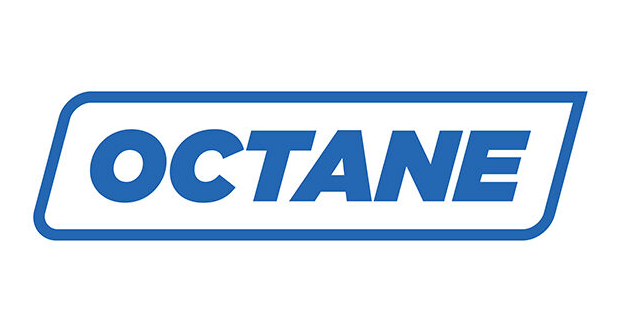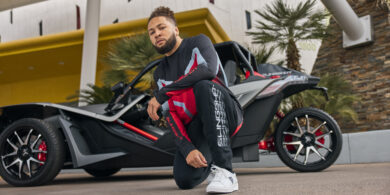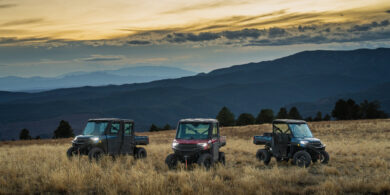It’s up and up for side-by-side sales – October 16, 2006
As powersports OEMs and dealers deal with the slide of snowmobile sales and the softening of the ATV market, utility vehicle sales are providing a much-needed spark to the industry.
Manufacturers generally report double-digit growth in the category, and a few are struggling to keep up with demand. Although UTVs were developed mainly for the commercial market, offering side-by-side seating and plenty of cargo space, most units are sold to individuals. However, when compared with ATV sales, UTVs remain a small part of the overall industry.
The Motorcycle Industry Council does not track UTV sales, but the Outdoor Power Institute does to some extent, ranking John Deere as the top seller, closely followed by Kawasaki. OPEI estimates that UTV sales will grow more than 20 percent this year.
“Sales have been consistent for us,” reports Bill Klutho, public relations manager for the John Deere Commercial and Consumer Equipment division based in Cary, N.C. “Basically it’s a category we invented, and we’ve consistently updated our products.”
Deere tweaked its product lineup early this year and plans to introduce a new UTV in December, Klutho said. The company had experimented with selling ATVs produced by Bombardier Recreational Products, but it recently exited that business to concentrate on the core Gator product, which is sold through 2,000 John Deere tractor dealers.
Kawasaki Motors Corp. USA, Irvine, Calif., is tweaking UTV production at its Maryville, Mo., engine plant and Lincoln, Neb., production facility to keep up with demand, says Vince Iorio, ATV and utility product manager. Kawasaki also is a pioneer in the industry, introducing its first UTV in the late ’80s, Iorio says.
UTV sales, while still growing, have leveled off from the heady days when 100 percent increases were commonplace. Between August 2005 and August 2006, Kawasaki Mule sales were up 11 percent. The largest pool of individual buyers consists of homeowners with enough land to make a UTV useful, says Iorio. Hunters and farmers also represent significant sales, especially for camouflage-colored models, he notes.
Until land-use policies change to allow wider UTVs on U.S. Forest Service trails, the market isn’t likely to approach ATV sales anytime soon. UTVs are primarily designed for work, although they do have appeal among Baby Boomers, Iorio says.
The Yamaha Rhino UTV is marketed as the ultimate hunting vehicle, which appeals to farmers and small landowners who use the vehicle for work during the week and for play on the weekends, says Steve Nessl, ATV and side-by-side public relations manager for the Cypress, Calif.-based company. Introduced in 2003 as a 2004 model, year two sales were double year one’s numbers before leveling off to double-digit growth.
As a result of that continued surge, the company has streamlined production at its Newnan, Ga., plant to keep pace with demand. “We knew the Rhino was good, but we didn’t know it would have this much appeal,” Nessl says. Because of the ability to configure the passenger and cargo areas of UTVs, which can have similar performance capabilities as ATVs, the market demographics have expanded. “As the demographics skew older, we’ll probably see more people migrate to UTVs, but it remains to be seen,” Nessl says.
Arctic Cat spokesman John Tranby describes the category as “awesome,” reporting sales growth of 20 percent each of the past two years. “It’s the right product at the right time,” says Tranby, marketing communications manager at Arctic Cat, Thief River Falls, Minn. “Ours is less of a hard-core utility vehicle and more of a sport utility vehicle. People are buying it instead of an ATV or adding a UTV.” He says most buyers own property and ride on their own trail network.
Arctic Cat is in the midst of increasing production at its St. Cloud, Minn., engine manufacturing facility to take advantage of the sales growth among its UTV products. Tranby agrees that the UTV demographic skews older than the ATV market, appealing more to people 45 and older with household incomes of more than $60,000. Baby Boomers find UTVs easier to get into and more enjoyable since multiple people can ride at the same time.
UTVs may be cannibalizing ATV sales, but Matt Homan, general manager of the utility division at Polaris, believes utility vehicles are bringing new people into the sport. Polaris does not disclose sales figures, but Homan also says that sales have been growing at a double-digit pace. He agrees that market growth has been propelled mainly by recreational users. For the 2007 model year, the Polaris XP Ranger has a top speed of 50 mph and new instrumentation.
In order for UTVs to be utilized fully on recreational trails, laws will need to change in many local, state and federal jurisdictions, and powersports OEMs will need to lead that charge, Homan says. While he doesn’t foresee a time when ATV and UTV sales will be equal, Homan estimates that the UTV sales could be 25 percent to 30 percent of ATV sales.
“UTVs definitely are a bright spot for OEMs,” Homan says. psb




